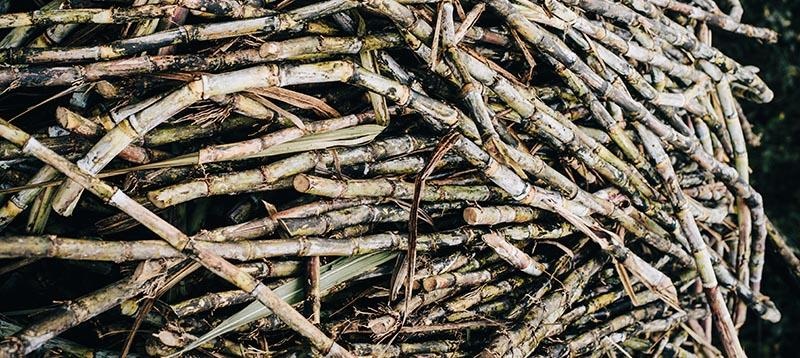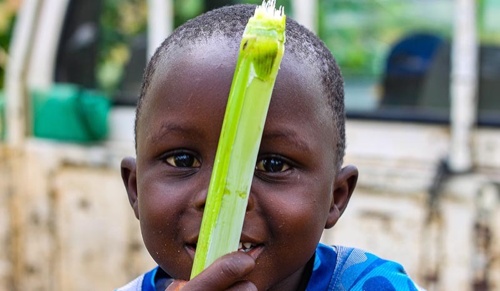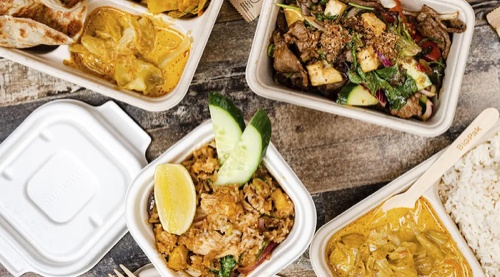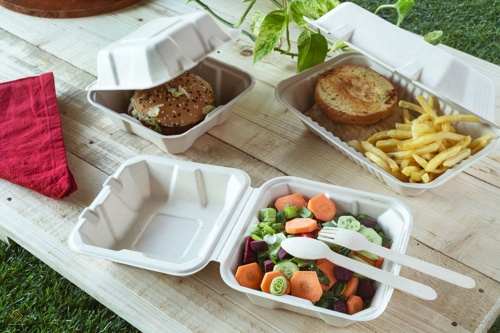A Guide To Packaging Sugarcane Fiber Everything you should know about Packaging with Sugarcane Fiber
Sugarcane fiber packaging is an eco-friendly alternative to traditional packaging sources. Ethically sourced and renewable, sugarcane fiber presents many benefits for the packaging and textile industries.
In this guide, we’ll explore sugarcane fiber and answer the following questions:
What is sugarcane fiber/bagasse?
How is sugarcane fiber produced?
What are the environmental benefits of sugarcane fiber?
What is sugarcane fiber used in?
How does sugarcane fiber compare to alternative packaging products?
Will sugarcane fiber work for my business?

What Is Fiber From Sugarcane? Presenting Bagasse
Sugarcane bagasse, or simply bagasse, is another name for sugarcane fiber. It is the fibrous portion of a sugarcane stalk that is still present after the juice has been extracted. This sugarcane portion is frequently thrown away, burned, or utilized as a fuel source for sugar mills.
Sugarcane stalks are given a new lease of life as raw materials when they are converted into goods. This substance is regarded as a very renewable resource since it employs a non-edible waste product from the food manufacturing process.
Bagasse may be used to make a wide range of goods, including paper goods, paper packaging goods, and even bowls and cups.
How Is Fiber From Sugarcane Made?
Contrary to popular belief, creating a sustainable product from raw sugarcane is a considerably simpler procedure.
The first step in the production process is to fully extract the juice and nutritional value from the harvested sugarcane stalks. After extraction, just the bagasse fibers are still present.
Step 2: Water is then thoroughly incorporated with the fibers. This procedure yields a pulp that resembles wood pulp in consistency.
Step 3: Adding pressure and heat causes the pulp to change and mold into a variety of goods.
Following analysis, the bagasse’s plant polymer composition is as follows:
45%–55% Cellulose
20%–25% Hemicellulose\s18%–25% Lignin (a complicated organic polymer) (a complex organic polymer)
1%–4% 1% Ash Extra Waxes
A flexible, environmentally friendly plant material with several uses is produced by this material composition.

What Are The Environmental Benefits of Sugarcane Fiber?
The first step in the production process is to fully extract the juice and nutritional value from the harvested sugarcane stalks. After extraction, just the bagasse fibers are still present.
Step 2: Water is then thoroughly incorporated with the fibers. This procedure yields a pulp that resembles wood pulp in consistency.
Step 3: Adding pressure and heat causes the pulp to change and mold into a variety of goods.
Following analysis, the bagasse’s plant polymer composition is as follows:
45%–55% Cellulose
20%–25% Hemicellulose\s18%–25% Lignin (a complicated organic polymer) (a complex organic polymer)
1%–4% 1% Ash Extra Waxes
A flexible, environmentally friendly plant material with several uses is produced by this material composition.
Renewable, biodegradable, and compostable are the three traits that define eco-friendly materials. Fiber from sugarcane is all three.
Renewable: Each year, sugarcane is produced in quantities of about 1.2 billion tons. 100 million tons of bagasse are produced annually from this. While some of this bagasse is used to make biofuel, the majority is thrown away. By giving this agricultural residue a new use that it would not otherwise have, bagasse packaging helps farmers and reduces waste.
Biodegradable – Although we would like to think that all items would be composted locally, the truth is that this is not always the case. Planning for the possibility of things ending up in landfills and by the side of the road is crucial. A product’s biodegradability guarantees that it can decompose naturally over time. Within 30 to 90 days, sugarcane fiber can begin to biodegrade.
Post-consumer sugarcane products can decompose even more quickly in commercial composting facilities. Bagasse may be completely composted in about 60 days. Bagasse becomes a fertilizer rich in calcium, potassium, phosphorus, and nitrogen when it is composted.
Today, sugarcane fiber is widely employed in a variety of products and sectors and is a well-known ethical material.

What Is Sugarcane Fiber Used In?
Bagasse, made from sugarcane fiber, is used to make:
Paper, textiles, food packaging items, biofuel, and packaging materials for packaging products
It can take the place of the plywood and particleboard that are often used to build cardboard boxes. It uses less wood than newsprint does, by more than 52%.
Sugarcane items like our NoTree Hot Cups and NoTree Bowls are available from Good Start Packaging. Along with wheat straw fiber, bagasse is also utilized in our fiber packaging.
How Does Sugarcane Fiber Compare to Alternative Packaging?
Bagasse, made from sugarcane fiber, is used to make:
Paper, textiles, food packaging items, biofuel, and packaging materials for packaging products
It can take the place of the plywood and particleboard that are often used to build cardboard boxes. It uses less wood than newsprint does, by more than 52%.
Sugarcane items like our NoTree Hot Cups and NoTree Bowls are available from Good Start Packaging. Along with wheat straw fiber, bagasse is also utilized in our fiber packaging.
Goods made from sugarcane fiber offer a similar and less expensive alternative to foam and paper products used in food packaging. They also offer a long list of other advantages:
High insulating characteristics and tolerance for high temperatures (up to 200°F). Grease and water resistance. Durability. Freezer safety (internal temperature maintenance)
According to several research, fruits and vegetables kept in packaging made of sugarcane fiber have a longer shelf life. Due to its high porosity, bagasse fiber also absorbs more moisture, promoting ventilation and a drier environment for produce.
With our Notre Hot Cups and Bowls made of sugarcane fiber, we’ve gone above and beyond to increase durability and stop leaks, adding a biodegradable PLA liner as one such measure.
Additionally, we include lids made of biodegradable plants with our cups. Eco-friendly, biodegradable cups are all too frequently found with traditional plastic lids. This may mislead customers and impede the pickup of biodegradable waste.
Our sugarcane fiber goods function just as well as items made of wood fibers and are made in accordance with FDA food regulations. Comparing bagasse to substitutes like paper, wood pulp fiber, Styrofoam, and petroleum-based polymers makes the benefits obvious.
Packaging made of sugarcane fiber is a strong, insulating, and resistant to high temperatures option that is ecologically beneficial and sustainable. It compares favorably with the must-haves and is also reasonably priced.

Will Sugarcane Fiber Work For My Business?
Bagasse is absolutely something to think about if your food business currently employs paper, wood pulp, polystyrene foam, or plastic. Sugarcane fiber packaging is a terrific alternative if you’re enthusiastic about sustainability and providing renewable, biodegradable items to your clients.
We provide a wide range of samples for you to try any of our sugarcane products.
To learn how to satisfy your packaging demands with the most environmentally friendly materials available, get in touch with our experts.




